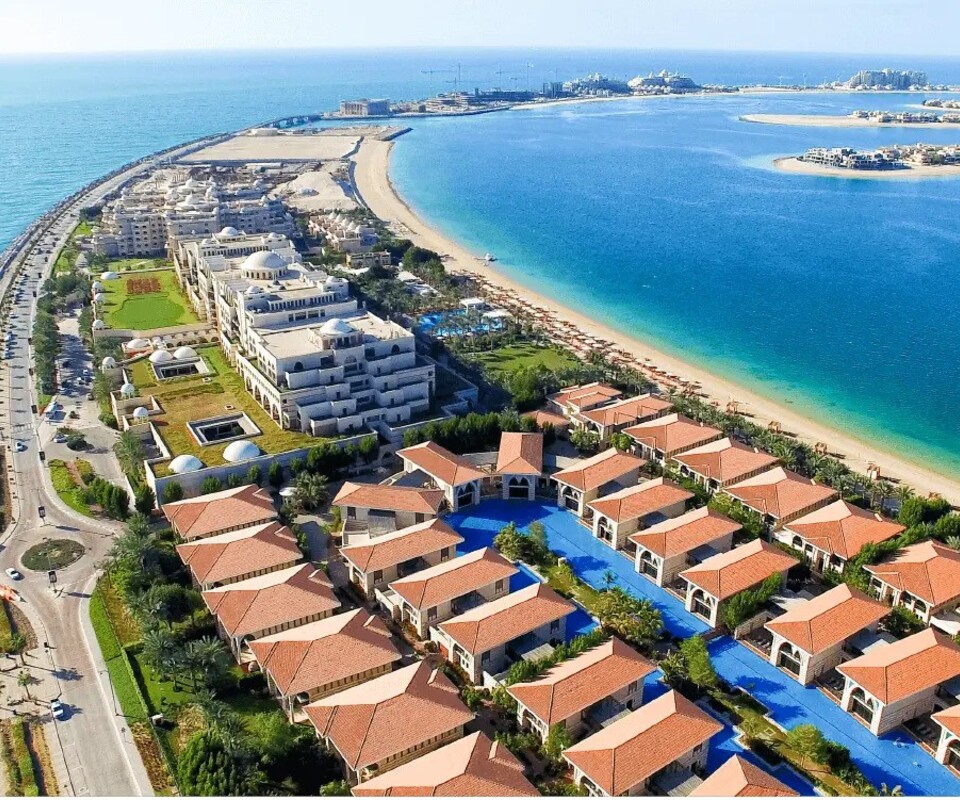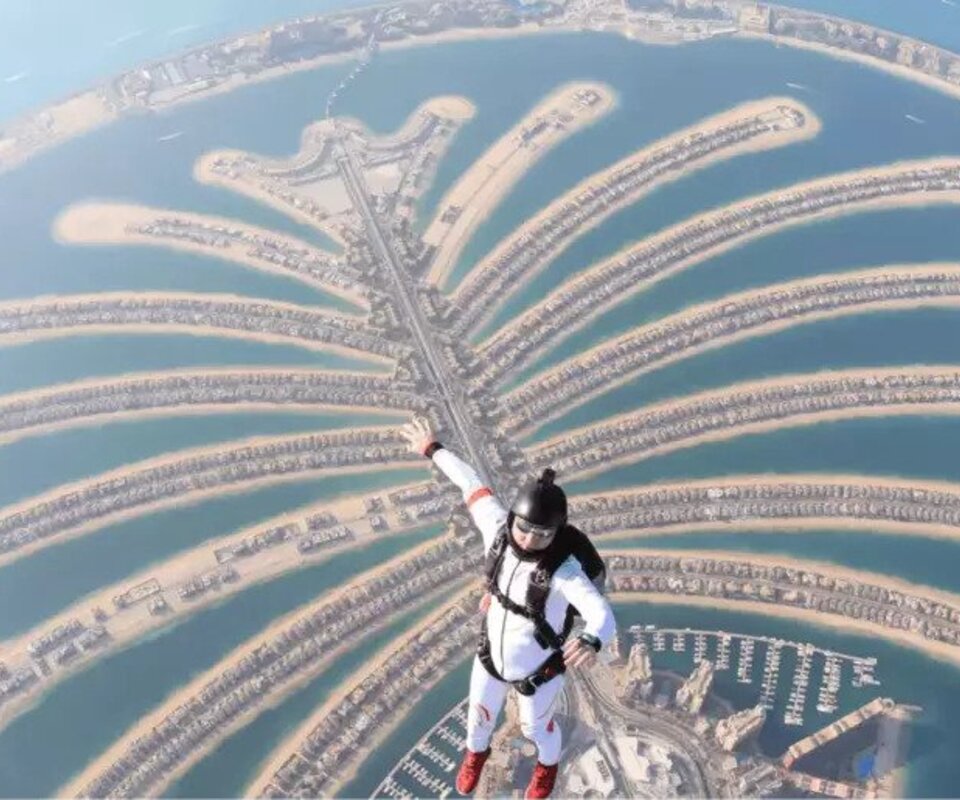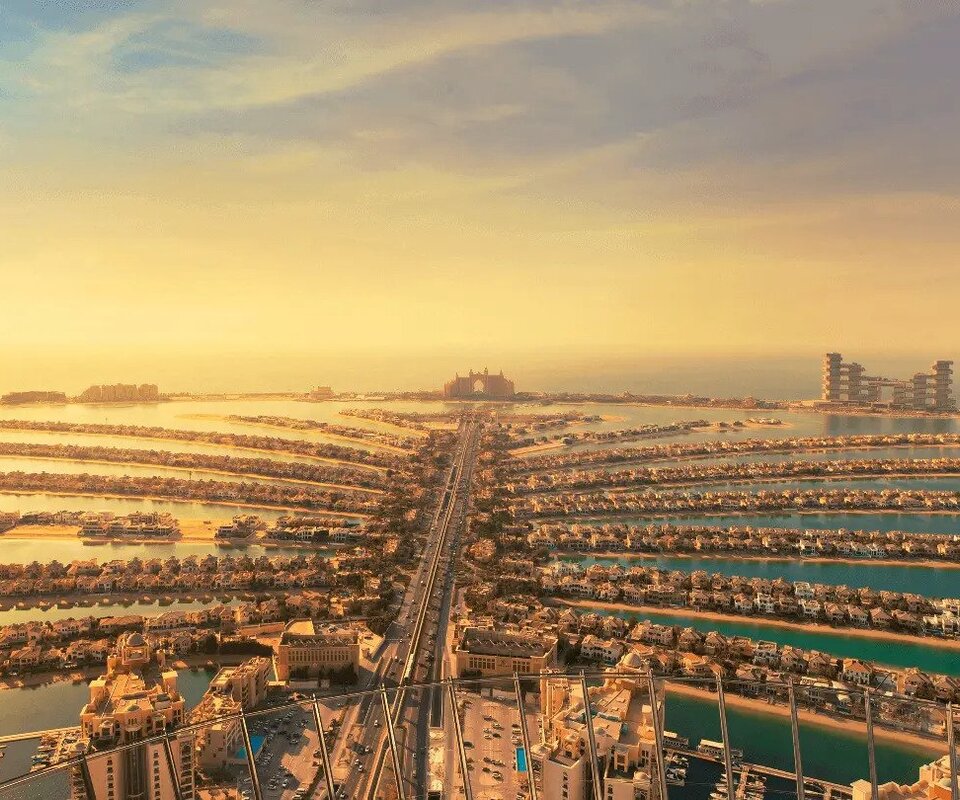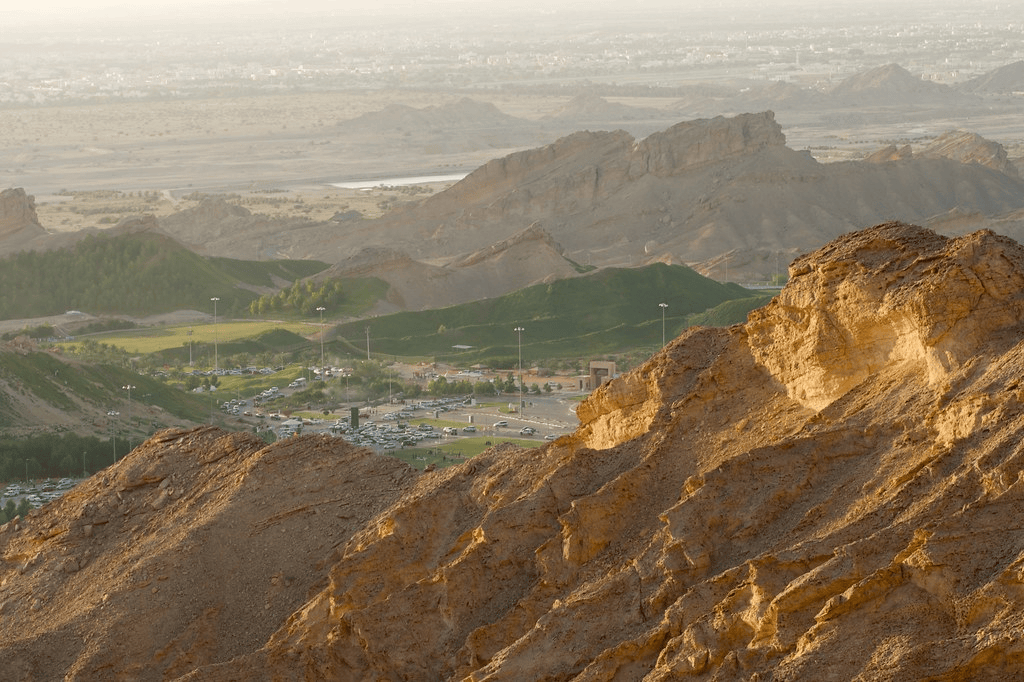Dubai has some of the most awe-inspiring structures known to man, both modern and archaeological. One of them is Palm Jumeirah - a man-made island that is often referred to as the "eighth wonder of the world." But what is Palm Jumeirah, exactly? How did it come to be? And what's the story behind it?
There's so much more to Palm Jumeirah than meets the eye. In this post, we'll look at Palm Jumeirah's history and story and explore some of the unique features that make it one of Dubai's most popular destinations. So pack your swimsuit and dive in!
Palm Jumeirah's history is quite interesting: this project was initiated in 2001 in response to Dubai’s booming tourism industry. To keep up with the demand, Nakheel Properties (a government-owned company) created a palm-shaped island home to luxury hotels and resorts. Construction began in 2003 and finished in 2007, with Palm Jumeirah becoming one of the most iconic man-made structures in the world.
As such, Nakheel developed Palm Jumeirah and brought American architecture firm Helman Hurley Charvat Peacock on board to create the master plan. The crescent's open sea side was shored up with mainland stones and boulders, but the islets were mostly made from Persian Gulf sand. By 2004, land and basic infrastructure were ready. The first residents moved in 2007 after construction began in 2006.

So, what is Palm Jumeirah? Well, it's an archipelago that looks like a palm tree in a circle from above. This ambitious project is one of three palm-shaped islands created by Nakheel Properties, responsible for some of the world's most ambitious real estate projects.
This luxurious residential and leisure destination features themed hotels, villas and apartments, marinas, beaches, shops, restaurants and entertainment venues - all surrounded by shimmering turquoise seas. It's designed as a self-contained city in its own right, with more than 40 km of shoreline. The main Palm Jumeirah sectors are the trunk, spine, fronds, and crescent. The development's entrance is the broad trunk, bridged to the mainland. Another bridge links the trunk to the spine, a narrow central axis with 17 fronds. The crescent protects the other sectors. Its three sections allow seawater to circulate. A transit monorail and a vehicular tunnel connect the spine and trunk.
Today, tourists can visit Palm Jumeirah and enjoy its numerous beaches, restaurants, shops, spas, and other amenities. There are also several attractions like aqua parks and water sports activities at The Coves and The Lost Chambers Aquarium - a fun place for all!
For those wondering about Palm Jumeirah facts, here are a few interesting ones about this incredible feat of construction:
- The palm fronds are formed from 61 million cubic metres of sand and 7 million tons of rock.
- The island also features one of the largest man-made marinas in the world, with more than 800 luxury yachts docked in its waters!
- Some A-list celebrities that love the Palm Jumeirah hotels include Kim Kardashian, Priyanka Chopra, Robert De Niro and more!
- Trump nearly got here! Yes, the man himself was set to establish a Trump Tower on the property but never saw it through.
And these are only some of the facts, figures, and tidbits about Palm Jumeirah! This feat of architecture and engineering is a massive part of Dubai tourism for a good reason.

If you want to explore this stunning creation from above, the best view in Dubai is The View at The Palm. You can enjoy a 360-degree panoramic view of the palm-shaped island and glimpses of the iconic landmarks on either side, such as Burj Al Arab and Atlantis The Palm hotel. You'll also see the palm fronds and trunk from up top - a fantastic sight!
Quick tip: The View is the best place to watch the sunrise and sunset in Dubai! It's also home to the best infinity pool in Dubai, which should be experienced.

In short, Palm Jumeirah is a stunning artificial archipelago shaped like a palm tree off the coast of Dubai. It offers luxury living and leisure activities for its residents and visitors alike. It's genuinely one of the world's most impressive feats of engineering - and your visit to Dubai won't be complete without taking in its incredible beauty from The View at The Palm.
So now that you know what Palm Jumeirah is all about, it's time to book your ticket and explore this artificial wonder for yourself! From its white sandy beaches to its top-notch restaurants, there's something for everyone in this impressive part of Dubai's innovation.
Palm Jumeirah, Facts, History and Story
-
 New Heights Discover the Highest Mountains in the UAE5th November 2023The United Arab Emirates (UAE) is often associated with towering skyscrapers, luxurious malls, and vast deserts. However, the highest mountains in the UAE are also breathtaking. These geological wonders provide a stark contrast to the urban landscape and offer a chance for adventure seekers to explore the region's ancient past. In this article, we'll answer some key questions about the UAE's mountainous landscapes: "How many mountains are there in the UAE?" "What is the highest mountain range in the UAE?" and "What are the names of the mountains in the UAE?"
New Heights Discover the Highest Mountains in the UAE5th November 2023The United Arab Emirates (UAE) is often associated with towering skyscrapers, luxurious malls, and vast deserts. However, the highest mountains in the UAE are also breathtaking. These geological wonders provide a stark contrast to the urban landscape and offer a chance for adventure seekers to explore the region's ancient past. In this article, we'll answer some key questions about the UAE's mountainous landscapes: "How many mountains are there in the UAE?" "What is the highest mountain range in the UAE?" and "What are the names of the mountains in the UAE?" -
 Travel for Women: Jet-Setting in Style Essentials20th October 2023When preparing for a trip, it may seem like a good idea to pack everything you might need. But, trust us, it can quickly turn into a nightmare. Overpacking can cause chaos at the airport, during the trip, and even when it’s time to return home. It’s a recipe for disorganisation, stress, and frustration. Therefore, ladies, it’s essential to pack smart for both the destination and the journey. Today, we’ll be discussing travel essentials for women. Whether you're a solo adventurer or a businesswoman, we've got you covered. With our comprehensive list of travel essentials for women, you can transform any trip from stressful to delightful.
Travel for Women: Jet-Setting in Style Essentials20th October 2023When preparing for a trip, it may seem like a good idea to pack everything you might need. But, trust us, it can quickly turn into a nightmare. Overpacking can cause chaos at the airport, during the trip, and even when it’s time to return home. It’s a recipe for disorganisation, stress, and frustration. Therefore, ladies, it’s essential to pack smart for both the destination and the journey. Today, we’ll be discussing travel essentials for women. Whether you're a solo adventurer or a businesswoman, we've got you covered. With our comprehensive list of travel essentials for women, you can transform any trip from stressful to delightful. -
 Travel Essentials for Men The Ultimate Packing Guide15th October 2023The excitement of a new adventure is just around the corner- whether it's a beach getaway, an urban exploration, or a mountain trek - you can't help but notice the daunting open suitcase on the floor, waiting to be packed. The thought of packing can be overwhelming, but with the right approach, it'll be a breeze. Travelling is incredible, unlocking a world of new experiences, cultures, and unforgettable memories. But let's face it: for many men, packing can feel like a chore. Whether you're a seasoned jet-setter or a first-time traveller, having a solid list of travel essentials for men can turn this daunting task into a breeze.
Travel Essentials for Men The Ultimate Packing Guide15th October 2023The excitement of a new adventure is just around the corner- whether it's a beach getaway, an urban exploration, or a mountain trek - you can't help but notice the daunting open suitcase on the floor, waiting to be packed. The thought of packing can be overwhelming, but with the right approach, it'll be a breeze. Travelling is incredible, unlocking a world of new experiences, cultures, and unforgettable memories. But let's face it: for many men, packing can feel like a chore. Whether you're a seasoned jet-setter or a first-time traveller, having a solid list of travel essentials for men can turn this daunting task into a breeze. -
 Road Trip Essentials The Perfect Journey Across the UAE10th October 2023The United Arab Emirates, with its blend of modern marvels and timeless deserts, offers some of the world's most scenic and diverse road trips. Whether cruising the coastlines or delving into the dunes, ensuring your journey is smooth requires a bit of forethought. If you’re asking yourself, “How do I prepare for a perfect road trip?” or wondering, "How not to pack too much?" you’ve come to the right place. The answer lies in your road trip essentials. This list will guide you through the must-haves for adventures on the UAE roads. Read on for the ideal road trip packing list!
Road Trip Essentials The Perfect Journey Across the UAE10th October 2023The United Arab Emirates, with its blend of modern marvels and timeless deserts, offers some of the world's most scenic and diverse road trips. Whether cruising the coastlines or delving into the dunes, ensuring your journey is smooth requires a bit of forethought. If you’re asking yourself, “How do I prepare for a perfect road trip?” or wondering, "How not to pack too much?" you’ve come to the right place. The answer lies in your road trip essentials. This list will guide you through the must-haves for adventures on the UAE roads. Read on for the ideal road trip packing list!



